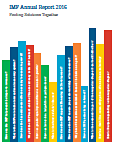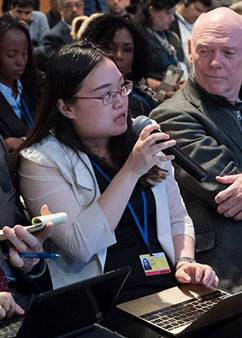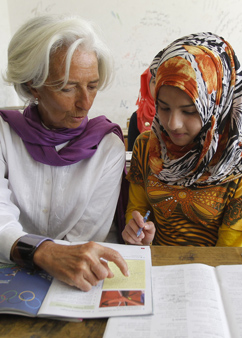Reform of the International Monetary System
Potential areas for reform:
As the international community continues to assimilate and build upon the lessons of the global financial crisis, the IMF has embarked on a process to better understand the challenges facing the international monetary system (IMS). This process includes a review whose purpose is to identify the system’s evolving shortcomings and lay the foundations for reforms that can strengthen resilience and long-term growth.
The work on the IMS also seeks to refine the IMF’s role at the center of the global economy, building upon the last review conducted in 2011. The current review began with a set of papers, issued in March 2016, designed to enrich policy discussions within the Fund and in other key international settings, including at the G20. It will provide a narrative for various projects incorporated into the IMF Work Program, including the global financial safety net, the size of the Fund, the role of the SDR, the Fifteenth General Review of Quotas, and analysis of capital flows.
The IMS review follows several IMF initiatives that were part of the reforms growing out of the crisis; for example, the introduction of integrated surveillance and the strengthening of financial sector surveillance, both intended to sharpen the Fund’s focus on risks and vulnerabilities; the broadening of spillover work; and the overhaul of the lending toolkit.
But the process of assessing the IMS requires that new challenges be taken into account: how to enhance the process of globalization to the broad benefit of all players in the global economy, address China’s re-balancing, and adjust to lower commodity prices and differences in monetary conditions among the world’s major economies. In particular, as the world navigates a low-growth environment and emerging market and developing economies continue to integrate and deepen their financial markets, risks and vulnerabilities associated with interconnectedness and openness need to be managed.
While the Fund is at the center of the IMS, it is part of a larger system with central banks and other standard-setting agencies. The Fund’s role is to provide analysis and a shared understanding: it will be up to the Fund’s membership take reform forward.
The IMF also contributes to the international monetary system by providing part of a global financial safety net that is responsive to three imperatives: encouraging better policymaking, financing adjustment at a reasonable pace, and providing insurance to “innocent bystanders” that may be affected by instability. Another level of the safety net is regional financing arrangements, such as the Chiang Mai Initiative, and the IMF seeks ways to work more closely with them.
How can the International Monetary System be improved?
The IMF has conducted an assessment of the international monetary system. The first stage of the assessment is a set of analytical papers that the Executive Board discussed in informal sessions in March 2016. The first paper, “Strengthening the International Monetary System—A Stocktaking,” examines structural shifts that underline the need to continue to strengthen the system. It identifies potential areas for reform that would bolster crisis prevention efforts and global mechanisms for adjustment, cooperation, and liquidity provision.
The paper outlined three possible areas of reform:
- Mechanisms for crisis prevention and adjustment;
- Rules and institutions for enhanced global cooperation on issues and policies affecting global stability; and
- The need to build a more coherent global financial safety net.
The second paper, “The Adequacy of the Global Financial Safety Net,” assesses the strengths, weaknesses, and challenges of the matrix of measures put in place to support the global economy in times of stress. These include international reserves, central bank swap arrangements, regional financing arrangements, IMF resources, and market-based instruments.
The paper establishes that the global financial safety net today is much larger and more multilayered than before and that it has been enhanced over time, notably with refinements to the IMF’s surveillance and lending frameworks.
However, the study also recognizes that there is scope for improving the current configuration of the safety net to enhance the predictability, reliability, and speed of insurance and financing mechanisms against shocks and to provide the right incentives for countries to implement sound macroeconomic policies.













